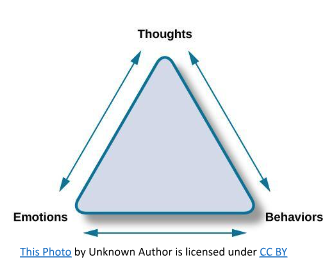Total Therapy Blog

Four Tips for Beating the Winter Blues
What Exactly Are the ‘Winter Blues’?
Do you long for spring as soon as October comes around? Do you feel a negative change in your mood, lack of motivation, and lethargy when the weather gets gloomy? You may be experiencing the winter blues. The winter blues are a wave of low emotions that come with cold and dark weather. These seasonal shifts typically surface around October and can persist until April, affecting approximately 15% of Canadians during the fall and winter months.
How Is This Different from Seasonal Affective Disorder (SAD)?
Seasonal Affective Disorder (SAD) is more than just the winter blues. It is a type of depression – Major Depressive Disorder with Seasonal Pattern. The symptoms of SAD can impact many areas of your life and impact your ability to function effectively at school, work, and in other areas of life.
Winter Blues and Behaviour

Have you ever noticed a link between your actions and how you feel? For example, some people express that they feel better after going for a walk. Or, you may have noticed a connection between your thoughts and your feelings. For example, when you think that a situation will turn out okay, you tend to feel better compared to when you think things will go horribly wrong. Thoughts, feelings, and behaviour are all connected and can impact each other greatly!
If your answer to two or more of the questions below is yes, you may benefit from making some behavioural changes!
- Do you have fun activities planned for the spring/summer, but very few for the fall and winter?
- Do you notice that you feel disconnected from what makes you feel good during the day?
- Are there times or days you feel bad but can’t tell why?
- Do you have difficulty pinpointing what you find joy in during the fall and winter months?
- Do you count down the days until nicer weather comes around so you can finally do something you like?
Helpful Behavioural Tips
Keep a journal of your activities during the day and how they make you feel:
Try making this as detailed as possible. Notice that your mood during the day isn’t always the same. Try making a connection between the activities that increase your mood and the activities that decrease it. The activities that increase your mood are not always workable. The workable ones make your life better in the long run and align with the person you want to be. The aim here is to be an observer of your own self during the day. We ultimately want to increase mood-enhancing activities that are workable.
Try new activities:
You may feel that there aren’t many activities that bring you joy. Do not panic, that is okay! You can try new ones by searching for a list of pleasurable or joyous activities online. Write the ones that grab your interest and try them out. Also, notice what your mood is like during and after those activities. Was there an increase or decrease? Can you now add some of these activities to your schedule?
Explore your values:
Value-driven action is proven to help people live better lives, but what are values anyway? Values are how you want to treat others and yourself; now and 50 years from now. Values and goals differ fundamentally; values aren’t destinations to be reached, unlike goals. Values are ongoing principles that shape how you navigate life, whereas goals are specific achievements or milestones you aim for. In contrast with goals, one can start living within their values immediately! Some examples of common values are:
- Accepting
- Assertive
- Empathetic
- Generous
- Loving
- Kind
- Friendly
- Playful
- Reliable
- Sincere
- Supportive
- Fun
Connect your values with your goals and actions:
Now that you have explored some of your values, pick one and create a goal. For example, if you value fun, a goal could be to: participate in fun activities twice a week. An activity for that goal could be to: play Connect Four, Jenga or a board game once a week with family. The idea of ‘fun’ is quite subjective – so yours may look different if fun is something that you value! Keep in mind we want to keep the activities workable; meaning they align with the person you want to be.
Bonus Tip:
If you’re experiencing big disruptions in your mood and life and you feel like you’re unable to turn things around on your own, we are here to help. Many people who experience the winter blues and symptoms of SAD see improvements through talk therapy. Collaborating with an empathetic, skilled, compassionate counsellor can make a big difference!
Direct billing, telehealth (virtual) appointments, and 15-minute complimentary consults are available. Book now!

Blog by Clinical Counsellor, Suncha Baptiste-Satney
References
ACT made simple: (Book) Russ Harris
https://cmha.ca/news/winter-blues-101/
https://medicine.umich.edu/sites/default/files/content/downloads/Behavioral-Activation-for-Depression.pdf








Follow Us!
& Stay Up To Date
BLOG